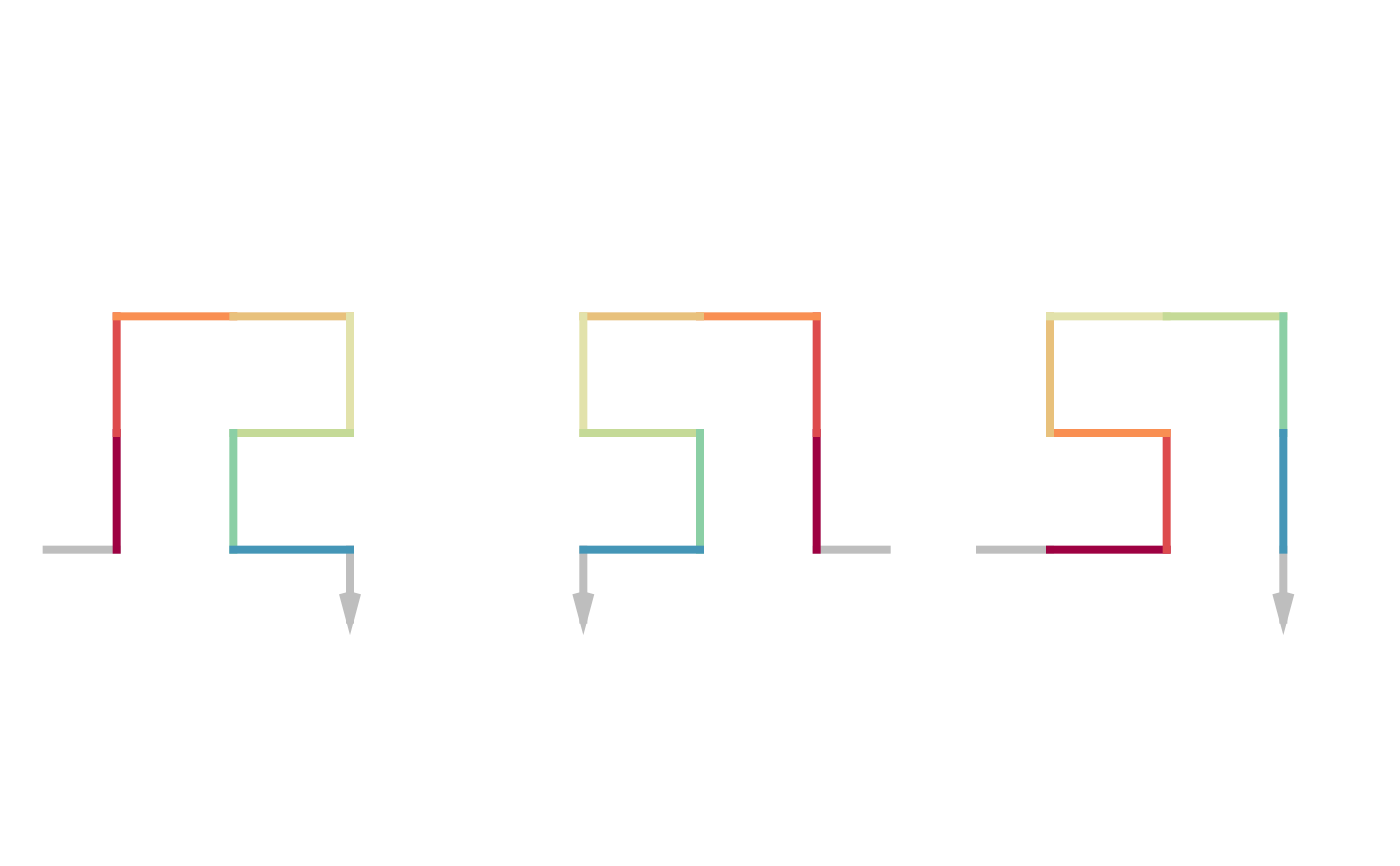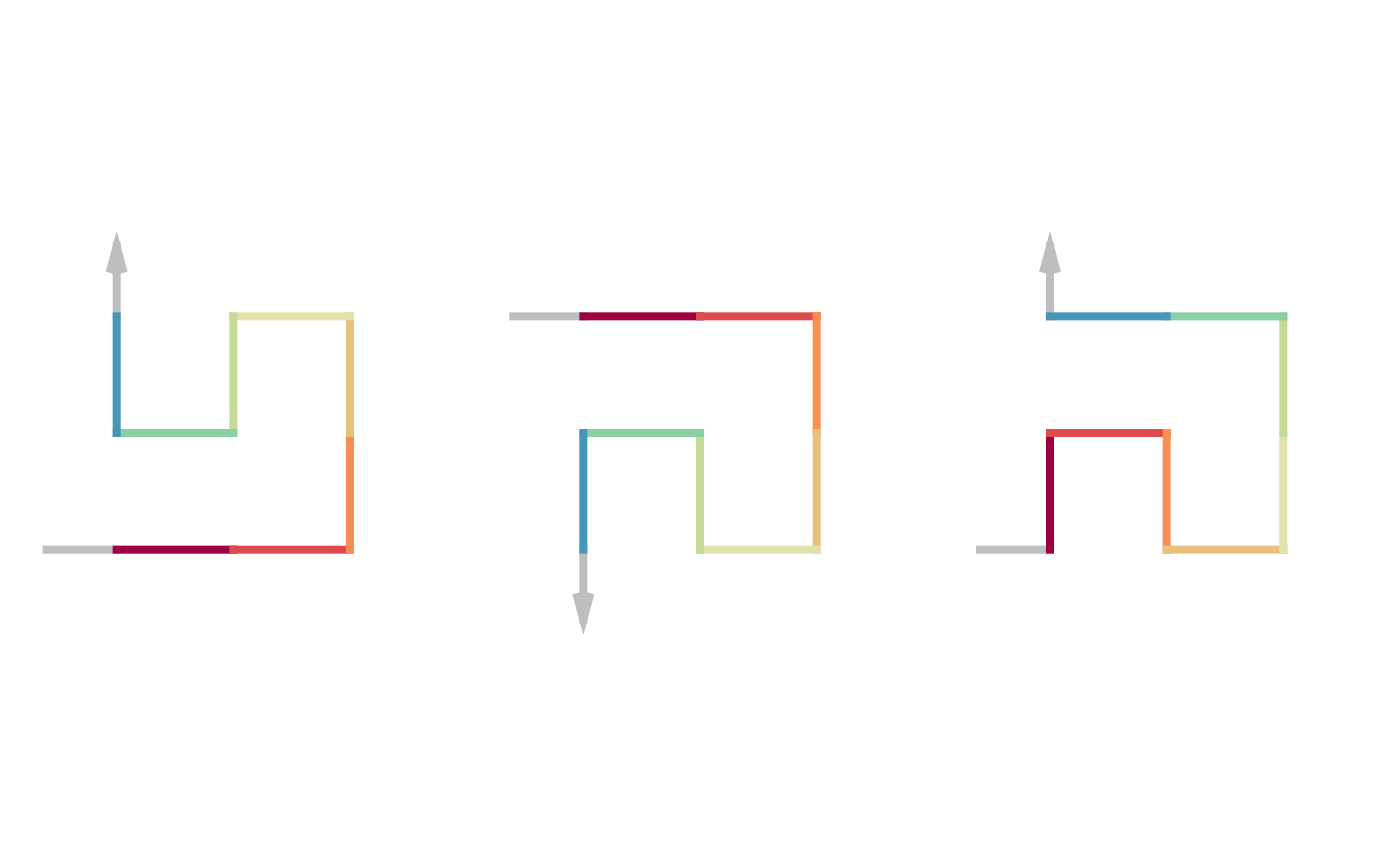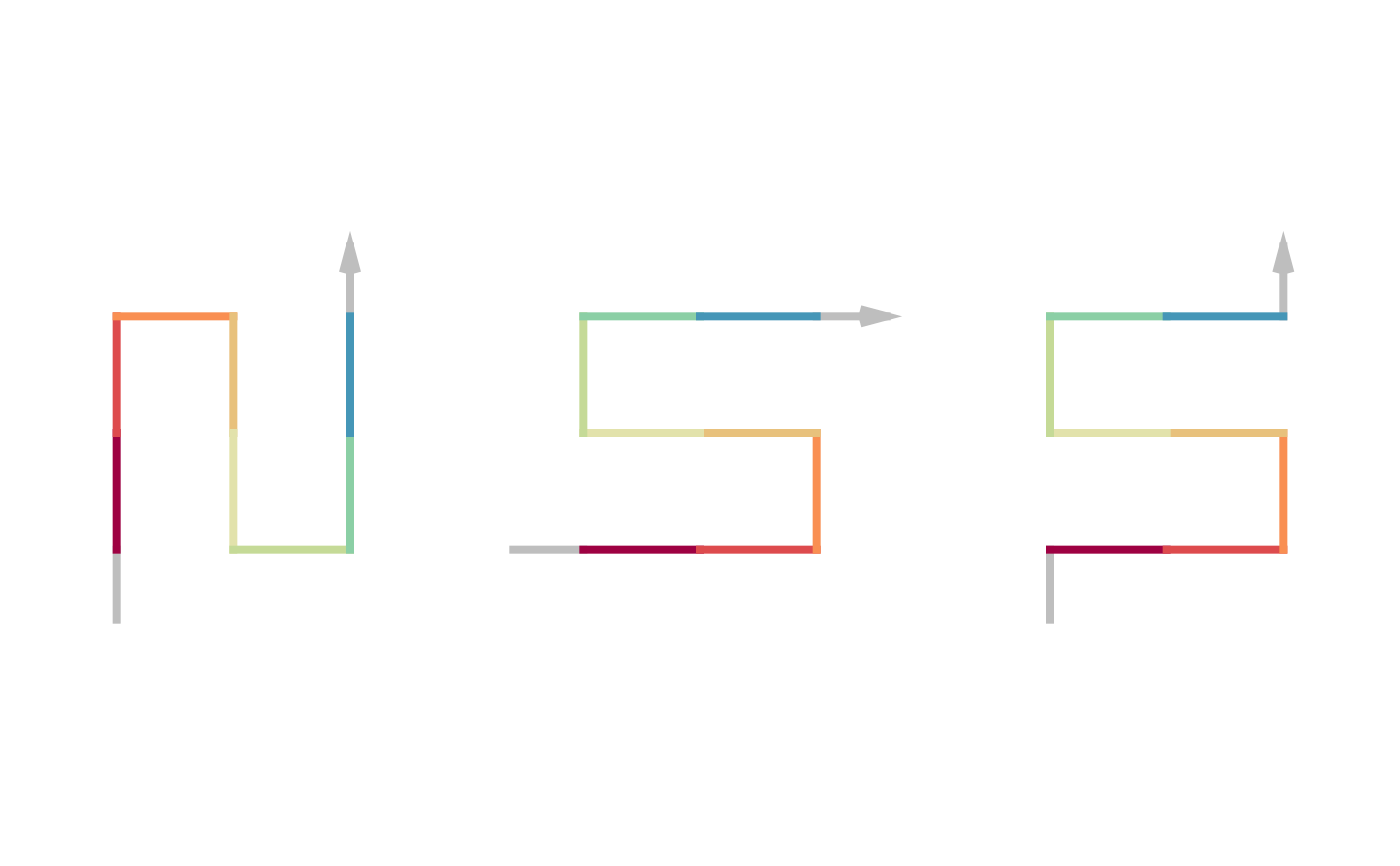Transformations of a sequence
Usage
# S4 method for sfc_sequence
sfc_rotate(p, rot)
# S3 method for sfc_sequence
^(e1, e2)
# S4 method for sfc_sequence
sfc_hflip(p, fix_ends = FALSE, bases = NULL)
# S4 method for sfc_sequence
sfc_vflip(p, fix_ends = FALSE, bases = NULL)
# S4 method for sfc_sequence
sfc_dflip(p, slop = 1L, fix_ends = FALSE, bases = NULL)
# S4 method for sfc_sequence
sfc_reverse(p)
# S3 method for sfc_sequence
rev(x)Arguments
- p, e1
An
sfc_sequenceobject.- rot, e2
Rotation measured in the polar coordinate system, in degrees.
- fix_ends
By default, the curve is flipped as a complete whole, which means, the associated entry and exit directions of the curve is also adjusted accordingly. When flipping subunits in a curve, e.g. level-1 subunits in a Peano curve, we want the entry and exit direction of the subunit not changed so that the subunits are still connected in the curve after the flipping. In this case,
fix_endscan be set toTRUE, then only the subunits are flipped while the connections to neighbouring subunits are not affected. See the Examples section.- bases
A list of base patterns, consider to use
BASE_LIST. It is only used whenfix_ends = TRUE.- slop
Slop of the diagonal. Value can only be 1 or -1.
- x
An
sfc_sequenceobject.
Details
sfc_rotate()and^()rotate each base pattern.sfc_hflip()flips a sequence horizontally.sfc_vflip()flips a sequence vertically.sfc_dflip()flips a sequence against a diagonal line (with slop 1 or -1).
Examples
p = sfc_3x3_meander("R", 2, rot = -90)
draw_multiple_curves(
p,
sfc_hflip(p),
sfc_hflip(p, fix_ends = TRUE),
nrow = 1)
 p = sfc_3x3_meander("L", 2, rot = -90)
draw_multiple_curves(
p,
sfc_vflip(p),
sfc_vflip(p, fix_ends = TRUE),
nrow = 1)
p = sfc_3x3_meander("L", 2, rot = -90)
draw_multiple_curves(
p,
sfc_vflip(p),
sfc_vflip(p, fix_ends = TRUE),
nrow = 1)
 p = sfc_3x3_peano("I", 2)
draw_multiple_curves(
p,
sfc_dflip(p, 1),
sfc_dflip(p, 1, fix_ends = TRUE),
nrow = 1)
p = sfc_3x3_peano("I", 2)
draw_multiple_curves(
p,
sfc_dflip(p, 1),
sfc_dflip(p, 1, fix_ends = TRUE),
nrow = 1)
